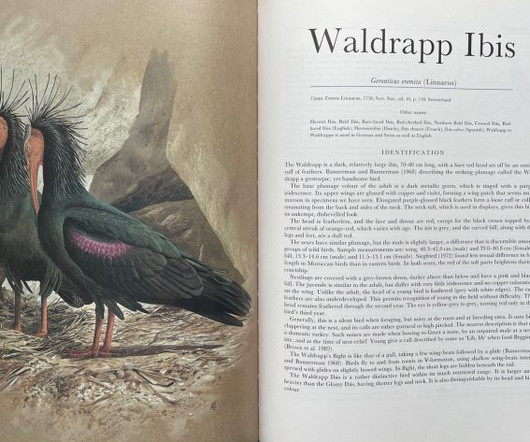The return of the Old Man
10,000 Birds
FEBRUARY 23, 2024
Storks, Ibises and Spoonbills of the World states that “disturbance by local people, tourists, and egg and zoo collectors has similarly reduced the colonies, and more protection is vital”. The ibises were initially trained to follow a microlight aircraft over the Alps. Here they were easy to overlook.











Let's personalize your content